Linksys DMA 2100 Media Center Extender Review
Linksys DMA 2100 Media Center Extender
Linksys' 2nd gen Media Center Extender now has Dual-Band Wireless-N, HDMI and more codec support.
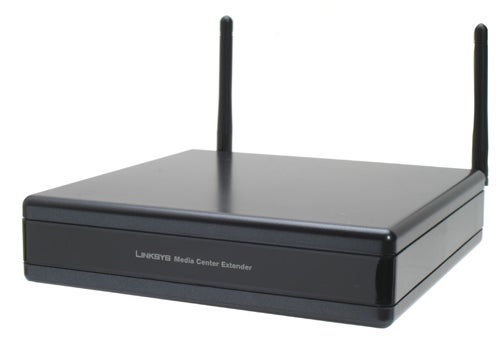
Verdict
Key Specifications
- Review Price: £179.99
The Living Room – it’s the holy grail of computing. Indeed, much of Microsoft’s strategy in recent years seems to have been focussed on getting the PC into the Living Room, be it through a Home Theatre PC (HTPC), Xbox 360 or a dedicated Media Center Extender. Unfortunately, its whole strategy has been a pretty mixed affair. PCs are generally considered too noisy for multimedia situations, as is the wind tunnel that is the Xbox 360, while previous Media Center Extenders (MCEs) were crippled by poor format support and sluggish performance.
Never one to give up easily, though, Microsoft has once again partnered with Linksys to produce what Microsoft considers the third generation of MCEs, the Xbox 360 being the second, and Linksys’ second effort in this arena. It aims to correct many of the problems encountered in past dedicated MCEs, while also being the first designed specifically with the much improved Vista Media Center in mind.
From the outset the form factor is a definite improvement. Past MCEs were large beasts but the DMA 2100 is suitably small and compact and though the black casing is hardly an inspired piece of design and won’t sit so comfortably with smarter looking consumer electronics products, it at least fades into the background. It’s worth noting, too, that the DMA 2100 isn’t the only offering available, since there’s also the DMA 2200 that adds an upscaling DVD player to the basic spec and is consequently larger. This, however, is the only difference between the two, with both offering otherwise identical features and performance.
So, what about features? Well, as reported back in November, high on the feature list is integrated Dual-Band Wirless-N. With a theoretical throughput of 300Mbps this makes wireless streaming of HD content a reality, something that couldn’t be said of 802.11a, b, or g. It also adds support for the Xvid codec, while also expanding codec support to many commonly used standard definition and high definition codecs.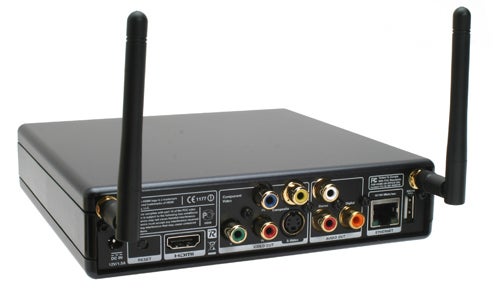
Thus, the DMA2100 will playback video encoded in MPEG 1, MPEG 2, WMV9, VC-1 in any container supported natively by Windows, along with audio encoded in PCM, MP3, WMA, WMA-Pro, Dolby Digital AC3, MPEG Audio and AAC-LC. It also expands connectivity, with HDMI 1.2, Component, Composite, S-Video, S/PDIF RCA and Stereo RCA making up the video and audio outputs, with a 10/100 Ethernet port for wired network connection and a USB port, though it’s only used for Firmware upgrades when an Internet connection isn’t available.
On paper, at least, it looks like a great feature set, especially when you include the traditional capabilities of MCE devices, such as PVR functionality when used in conjunction with a TV Tuner and access to all your PC media, such as photos, video and music as well. That you can now stream HD content wirelessly is obviously a great feature too, but can the DMA 2100 bring all this great functionality altogether in useable way?
Installation is, for the most part, pretty easy, though in my case it wasn’t without some teething problems. In the box you’ll find Component, Composite, Stereo Phono and Ethernet cables, along with a power clip compatible with UK and European connectors. Though there’s no HDMI cable in the box all you really need is there, including a set of batteries for the included remote.
For its part, when you plug in the DMA 2100 for the first time it immediately starts with Quick Installation guide that’s well thought out and easy to follow. Having setup the various settings and connected to your network you’re then given the option to setup the Extender straightaway, which you can take or come back to at a later date.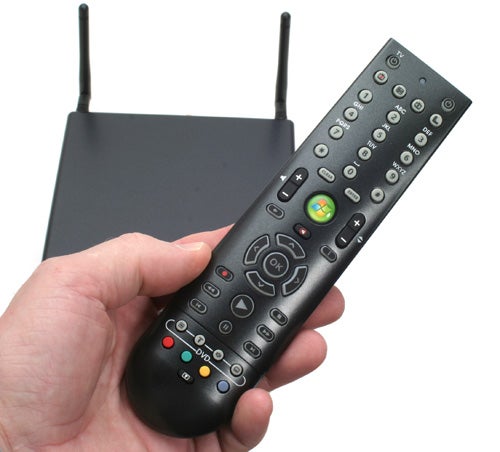
Though straightforward enough, this is where I encountered some problems. First, you must update your source PC using the disc provided: nothing difficult about that. Then, you must turn on both the Extender and your desired source PC, which should detect the extender and ask if you wish to install it. Next, you must enter a code provided by the extender into your PC, which should then begin the process of the two communicating with each other.
This is all fairly simple, even entering the code is only a small inconvenience and even novice users should have few problems following the steps. However, my initial attempts just simply failed. Everything would go fine up until the very final point, with the extender and the PC seemingly failing to establish a secure connection. After several attempts with different computers I was completely bemused. There were no third party firewalls interfering and there was no clear reason why I was having such problems: it just wouldn’t work. So, after a many hours of floral language I just gave up and decided to do something less annoying.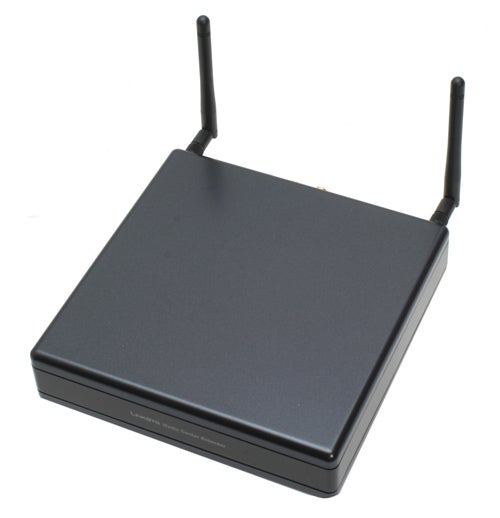
Until, that is, a few days later when I decided to attempt the process again. And, to my great relief, it worked first time. It probably goes to show that networks can be inconsistent things at times, so it’s not too bad a reflection on the DMA 2100 and most reports seem to suggest setup is smooth and without too many issues.
Having finished configuring the extender, getting everything up and running is relatively simple provided you already have Media Center configured and ready to use. On first use the extender will search for the various files in your media library and it’s not too sluggish about it either. Menus appear exactly as they do in Vista Media Center and though navigation can be a little sluggish at times, for the most part the DMA 2100 is responsive.
Having finally got everything working and ready to use it was time to delve deeper into the capabilities of the DMA 2100. All navigation is through the provided remote, which will be fairly familiar to anyone who has used a Media Center remote before. It’s a little disappointing, though, that compared to Microsoft’s own remotes, Linksys’ offering feels a little cheap. Its black plastic casing hardly reflects the £180 you’ll have to spend to own a DMA 2100, though its layout and size can’t really be faulted.
It does have some neat features, though. On first use you’ll probably find that some of the buttons don’t work, but these can be programmed to duplicate the functionality of another remote. Thus, to program it turn your TV on and off you simply put it into learning mode, point your TV remote at the infrared sensor in the extender remote, choose which buttons you want to program and you’re done. It may take a little time to program all the buttons you want, but once completed it works flawlessly.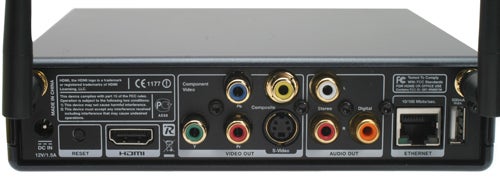
Setting up recordings of TV programs is simplicity itself, with the supplied guide being one of the best you’ll find on any device. It’s still slightly annoying that Media Center can’t fetch listings without connecting to the Internet, but once configured it’ll download new listings as and when required. Other elements of the Media Center navigation are also strong, though of all things the Music Library is probably least intuitive. It provides you with plenty of options for filtering and navigating your collection, but it’s presented in a way that’s too reliant on album art and feels a little crowded. Still, in the great scheme of things it’s not that bad, just not up to the standards set elsewhere.
However, alongside TV and music playback, the most important feature of the DMA 2100 is its ability to playback video content and this is what’s likely to attract most users, especially AV enthusiasts. In this respect, Linksys’ decision to expand codec support to such formats as DivX/Xvid and h.264 is obviously a welcome one and adds a lot of value to the unit.
In general the playback experience is pretty strong, too. At times there’s a short pause between opening a video and it beginning to play, but it’s not that big a deal. Another small thing is that you can’t fast-forward and rewind Xvid videos in the same way as other formats; though this is an issue with the codec itself so isn’t a source of real criticism.
Perhaps the best thing, though, is that unlike an Xbox 360 or a PC, the DMA 2100 is blissfully silent. It is this that really makes the £180 actually worthwhile, since you’ll be waiting a long time to find a PC that’s as small and silent and capable of doing all the things you need. It’s only a shame that the blue LED on the front of the unit is ridiculously bright and annoying; another sign that Linksys isn’t so sympathetic to the requirements of a consumer electronics product.
So far, then, we’ve established that the DMA 2100 is a pretty solid device. Fine, it isn’t the prettiest beast, but it is small and it’s packed with all the features you need to stream HD video content wirelessly, or over a wired network. It’s predominantly simple to setup and use, with simple guides to deal with all the details. Yet, as you might sense by my tone, there’s a giant ‘But’ lurking behind the sofa, occasionally flicking my ear and generally behaving like an utter git.
Enter, Microsoft! Try not to look too surprised but the main problem with the DMA 2100 is not anything to do with Linksys, but to do with the imperfect nature of the PC and Media Center. That Media Center for Vista has many great features is without doubt, but despite its largely excellent menu system it’s also a frustratingly inflexible program that would sooner impose what it wants than allow users to bend it to their needs.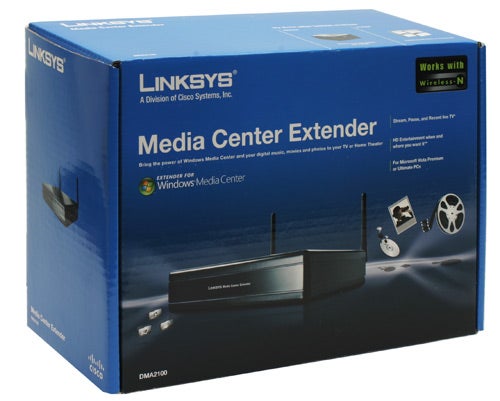
Thus, every now and then you’ll find a file that you’d like to play, but Media Center won’t play ball. You either won’t be able to see it, or it simply won’t be able to decode it. And, though there’s often a way around any problem through a variety of registry hacks and tricks, these aren’t user friendly solutions.
It is this that really gets to the crux of the problem of the whole Media Center Extender concept. In theory it has endless potential, but it’s held back by Microsoft’s wish to control every aspect of it. So, if you’re knowledgeable and patient and understand the ins and outs of what’s required to get what you want, then you may find the DMA 2100 a device that gives you almost everything you desire. However, those who might even consider themselves well informed will often be left feeling frustrated, confused and even cheated.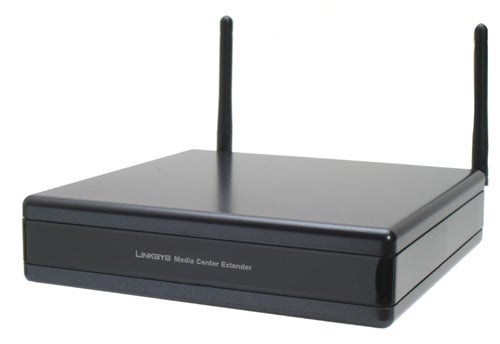
”’Verdict”’
Linksys has a done a very good job of translating the Media Center Extender concept into a well featured and powerful device, even if its lack of consumer electronics experience is evident in some of the design. But, for all its qualities the weakness of the DMA 2100 and its cousin, the DMA 2200, still lies within Media Center and the PC itself. If you’re patient and keen you can get a lot out of it, but despite much progress it’s still not a system that’s ready for the average consumer.
Trusted Score
Score in detail
-
Performance 7
-
Features 9
-
Value 7

